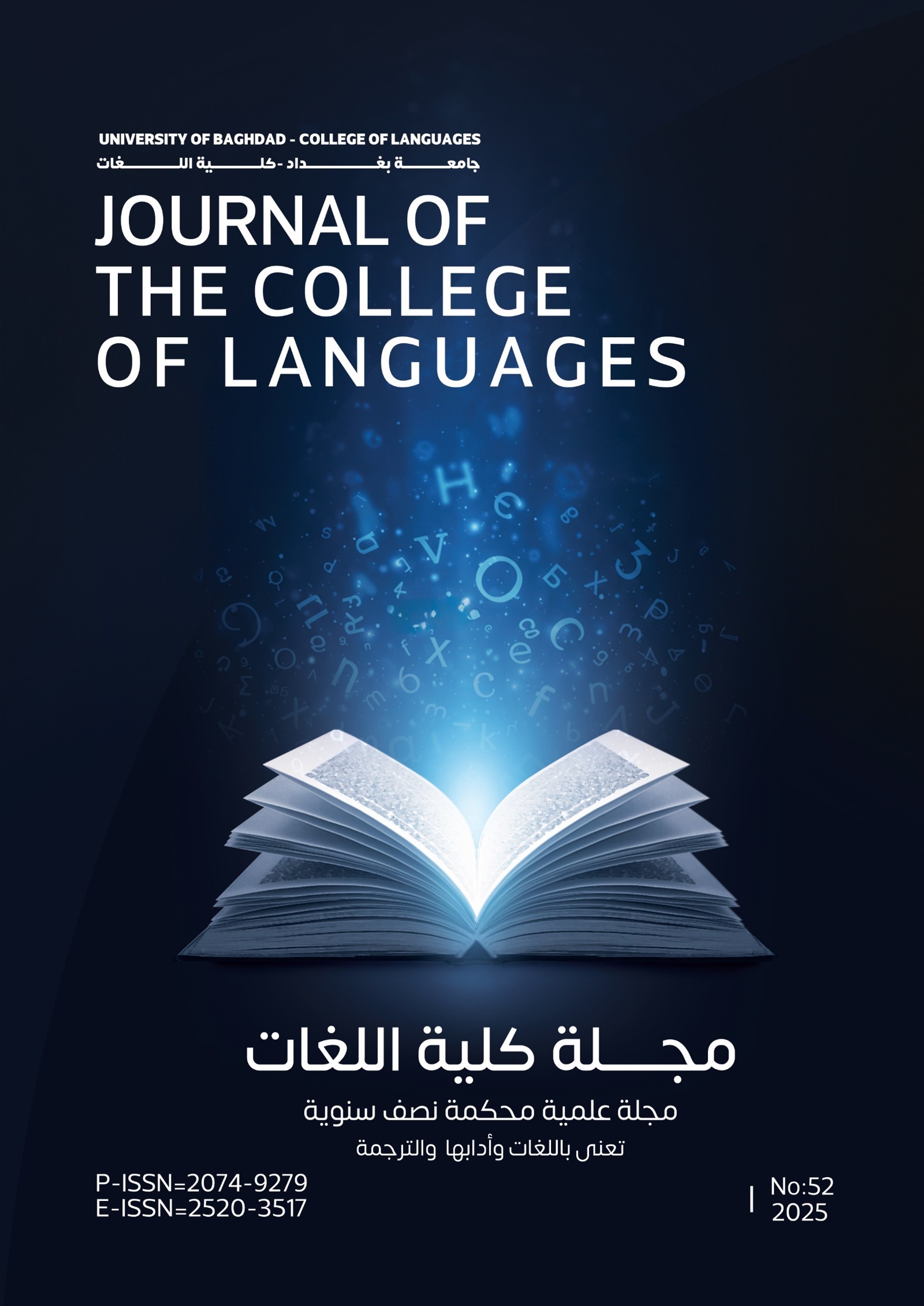The Arab-Islamic evoke in Borges’ poetry
La invocación árabe- islámica en la poesía de Borges
DOI:
https://doi.org/10.36586/jcl.2.2023.0.48.0109Keywords:
Metáfora, cultura oriental, poesía, influencia islámica, Luis BorgesAbstract
This article deals with the Arab-Islamic influence on the Argentine writer Luis Jorge Borges who is considered one of the greatest writers of the twentieth century. He speaks many languages and has a very significant cultural background. He is known for his great love of the Arabic language and his deep knowledge of oriental culture. Islamic and Arabic themes have always been present in his literary works and his writing style, whether in a novel, essay, or poetry. This descriptive study tries to study how the author uses Arabic material to express other ideas in an international literary style through quotes or metaphors. The article shows a small part of this Arab- Islamic influence by analyzing the poem entitled “Metaphors in the Thousand Nights and a Night” by the Argentine writer Luis Borges.
Jorge Luis Borges es un escritor argentino considerado como uno de los mayores exponentes de la literatura del siglo XX políglota y poseedor de una cultura muy amplia, conocido por su gran amor por lo árabe y su profundo conocimiento de la cultura oriental. Los temas islámicos y árabes siempre han estado presentes en sus obras literarias y en el estilo de su escritura, ya sea narrada en novela, ensayo o poesía. En este estudio descriptivo intentamos estudiar cómo el autor empleó el material árabe para expresar sus ideas filosóficas en estilo o técnica literaria universal a través de las palabras adaptadas o las metáforas. El objetivo del artículo es mostrar la influencia árabe-islámica en la poesía del autor argentino Luis Borges mediante el análisis de su poema Metáfora en las Mil y Una Noches.
References
Barrenechea, A.M. (1965). Borges: The labyrinth maker. New York: Robert Lima.
Blaustein, R.F. (2012). Faith in the literary world of Jorge Luis Borges. New York: George Olms Verlag.
Borges, J.L. (1980). Philosophy in the works of Borges. Mexico: Editing and publishing Meló.
________ (2016). Complete Poetry. Argentina: Library Economic Culture Fund Pocket University.
________ (nineteen ninety-five). A writer on the shores, Buenos Aires: Ariel.
Cala, C.E. (1992). "Borges and the Arabs". Journal of Linguistic and Literary Studies. Seville: University of Seville, V. VII, 111.
Cirlot, J.E. (2004). Dictionary of symbols. Madrid: Editing and publishing Melo.
Ferrin, E. (1992). "Borges's Islam". Philology hispalensis, V. 7,114.
Gheerbrant, J.C. (1985). Dictionary of symbols. Barcelona: Herder.
Mbaye, D. (2016). “The presence of the Islamic tradition in some stories of Fictions and El Aleph by Jorge Luis Borges”. Verbeia magazine, No. 1.
Pérez, M.L. (1998). “The word as a generating force of reality in Borges”. Philological Study Yearbook, No.19.
Pinera, H. (1975). Philosophy and Literature: approximations. Madrid: Player.
San Vicente, E. F, Mateu Mateu, M. T. and Mas Sancho, J. (1988). Spanish literature. Madrid: Santillana.
Tornielli., P. (2001). "Some Arabic and Islamic motifs in the work of Borges". Borges Studies on Line, 2011.
Zonana, V.G. (1999). “Jorge Luis Borges: his conception of metaphor in the 20's”. Magazine of Modern Literatures, No.29.
Downloads
Published
Issue
Section
License
Copyright (c) 2023 Journal of the College of Languages (JCL)

This work is licensed under a Creative Commons Attribution 4.0 International License.








